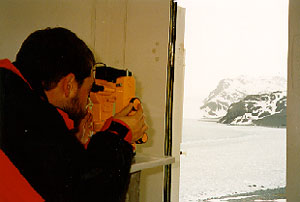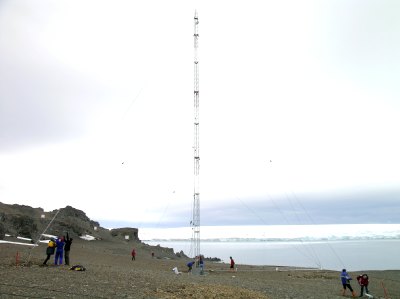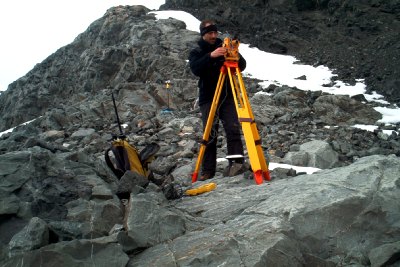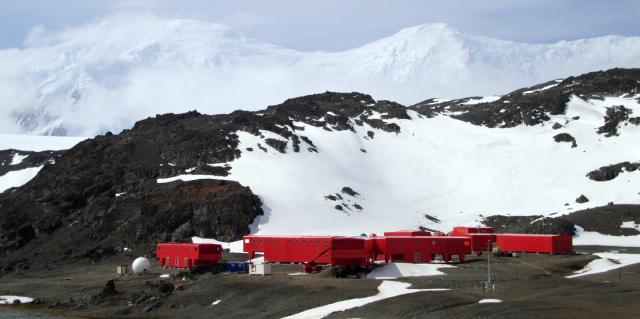
 Livingston Island Geomagnetic Observatory is part of a global network currently having more than 170 active geomagnetic observatories all over the world. Because of its remoteness, it is a partly manned observatory, meaning that it is attended by the scientific and technical staff only a part of the year, typically from December to February, coinciding with the austral summer. It started in December 1996 with the current geomagnetic station, though new instrumentation has gradually been added up to fulfill the evolving standards of observation. An ionospheric sounder was incorporated during the 2004-2005 Antarctic survey with the installation of vertical incidence emitting and receiving antennas and their control electronics.
Livingston Island Geomagnetic Observatory is part of a global network currently having more than 170 active geomagnetic observatories all over the world. Because of its remoteness, it is a partly manned observatory, meaning that it is attended by the scientific and technical staff only a part of the year, typically from December to February, coinciding with the austral summer. It started in December 1996 with the current geomagnetic station, though new instrumentation has gradually been added up to fulfill the evolving standards of observation. An ionospheric sounder was incorporated during the 2004-2005 Antarctic survey with the installation of vertical incidence emitting and receiving antennas and their control electronics.
|
|
|
The relative low density of geophysical data around the Antarctic gives our observatory an added value. In addition, having long data series in a given location provides information on the time evolution of the physical magnitude being measured, which is essential to many studies, such as those related to the secular variation of the main magnetic field, to the seasonal variations of both the magnetic field and the ionospheric parameters or those related to the 11-year solar cycle variation on both. The availability of more than 25 years of geomagnetic data, for example, enables to average out transient effects in magnetic and ionospheric data, which otherwise would be biased by natural reasons, or at least provide an incomplete vision of the real behavior. The aim of the observatory is thus to monitor both the geomagnetic and ionospheric activity and to send the data to Spain at any time so it can be analyzed and processed in real-time even when the Spanish Antarctic Base "Juan Carlos I" is unattended during the austral winter.
You can get more information on the geomagnetic measuring instruments and data processing in online bulletins. For the data, please consult the World Data Centres (eg WDC Edinburgh), our catalogues (Livingston data catalogues) or view the magnetograms (Livingston magnetograms) and ionograms (Livingston ionograms).
If you want to know more about our expeditions in Antarctica, read this news item, this El Pais blog entry #Somos Antártida, or watch the interview of Ben Trobats of El Punt Avui+ on 12 January 2016. Following you also will find the video "Observatori de l'Ebre, 20 anys investigant el camp magnètic a l'Antàrtida", produced by Antena Caro.




